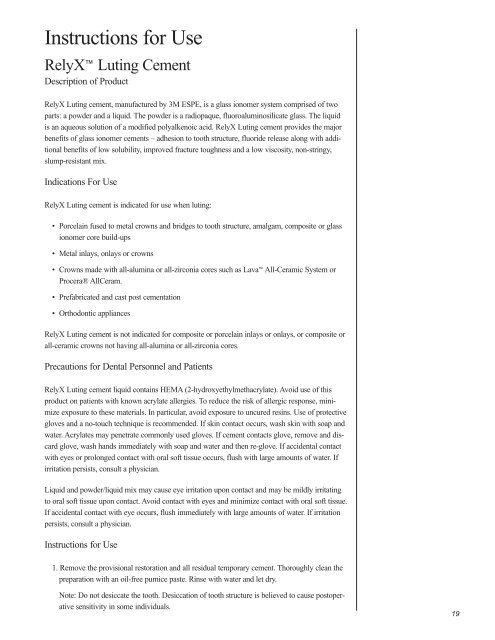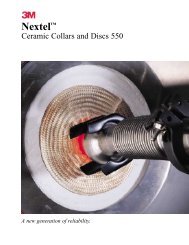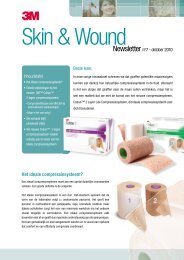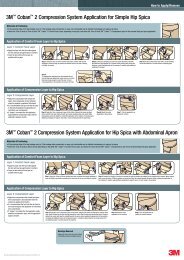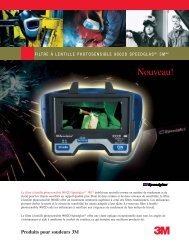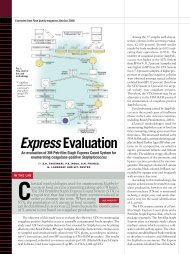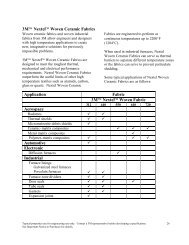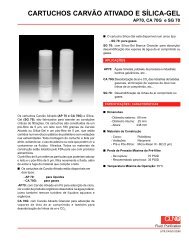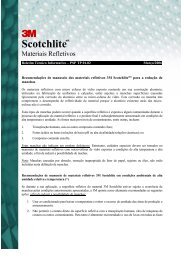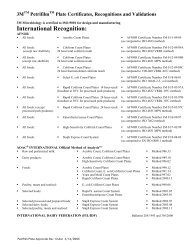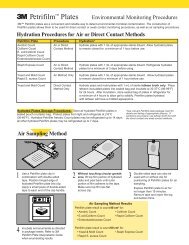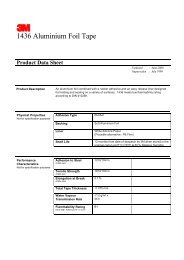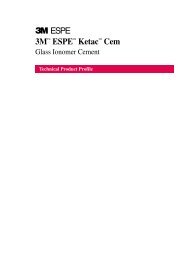RelyX™ Luting and RelyX™ Luting Plus Cement - 3M
RelyX™ Luting and RelyX™ Luting Plus Cement - 3M
RelyX™ Luting and RelyX™ Luting Plus Cement - 3M
You also want an ePaper? Increase the reach of your titles
YUMPU automatically turns print PDFs into web optimized ePapers that Google loves.
Instructions for Use<br />
RelyX <strong>Luting</strong> <strong>Cement</strong><br />
Description of Product<br />
RelyX <strong>Luting</strong> cement, manufactured by <strong>3M</strong> ESPE, is a glass ionomer system comprised of two<br />
parts: a powder <strong>and</strong> a liquid. The powder is a radiopaque, fluoroaluminosilicate glass. The liquid<br />
is an aqueous solution of a modified polyalkenoic acid. RelyX <strong>Luting</strong> cement provides the major<br />
benefits of glass ionomer cements – adhesion to tooth structure, fluoride release along with additional<br />
benefits of low solubility, improved fracture toughness <strong>and</strong> a low viscosity, non-stringy,<br />
slump-resistant mix.<br />
Indications For Use<br />
RelyX <strong>Luting</strong> cement is indicated for use when luting:<br />
• Porcelain fused to metal crowns <strong>and</strong> bridges to tooth structure, amalgam, composite or glass<br />
ionomer core build-ups<br />
• Metal inlays, onlays or crowns<br />
• Crowns made with all-alumina or all-zirconia cores such as Lava All-Ceramic System or<br />
Procera® AllCeram.<br />
• Prefabricated <strong>and</strong> cast post cementation<br />
• Orthodontic appliances<br />
RelyX <strong>Luting</strong> cement is not indicated for composite or porcelain inlays or onlays, or composite or<br />
all-ceramic crowns not having all-alumina or all-zirconia cores.<br />
Precautions for Dental Personnel <strong>and</strong> Patients<br />
RelyX <strong>Luting</strong> cement liquid contains HEMA (2-hydroxyethylmethacrylate). Avoid use of this<br />
product on patients with known acrylate allergies. To reduce the risk of allergic response, minimize<br />
exposure to these materials. In particular, avoid exposure to uncured resins. Use of protective<br />
gloves <strong>and</strong> a no-touch technique is recommended. If skin contact occurs, wash skin with soap <strong>and</strong><br />
water. Acrylates may penetrate commonly used gloves. If cement contacts glove, remove <strong>and</strong> discard<br />
glove, wash h<strong>and</strong>s immediately with soap <strong>and</strong> water <strong>and</strong> then re-glove. If accidental contact<br />
with eyes or prolonged contact with oral soft tissue occurs, flush with large amounts of water. If<br />
irritation persists, consult a physician.<br />
Liquid <strong>and</strong> powder/liquid mix may cause eye irritation upon contact <strong>and</strong> may be mildly irritating<br />
to oral soft tissue upon contact. Avoid contact with eyes <strong>and</strong> minimize contact with oral soft tissue.<br />
If accidental contact with eye occurs, flush immediately with large amounts of water. If irritation<br />
persists, consult a physician.<br />
Instructions for Use<br />
1. Remove the provisional restoration <strong>and</strong> all residual temporary cement. Thoroughly clean the<br />
preparation with an oil-free pumice paste. Rinse with water <strong>and</strong> let dry.<br />
Note: Do not desiccate the tooth. Desiccation of tooth structure is believed to cause postoperative<br />
sensitivity in some individuals.<br />
19


